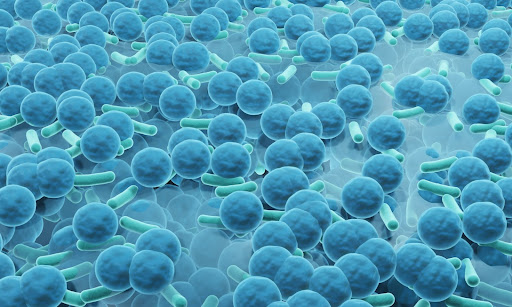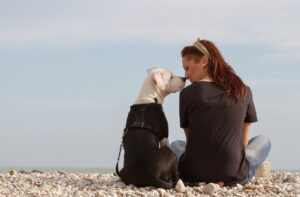Biofilm is a thin layer of microorganisms that forms on surfaces. Biofilms can form on living tissue or on inanimate objects, such as surgical instruments.
In veterinary medicine, biofilms can cause infections in animals. These infections are difficult to treat because the biofilm protects the microorganisms from antibiotics. In addition to the urgent need to treat them in veterinary patients, surgical instruments must be treated to prevent biofilm formation on them.
How Biofilm Forms
Biofilm begins to form when bacteria attach to a surface, Once the bacteria attach, they begin to produce extracellular polymeric substances (EPS). EPS are “sticky”, which helps the bacteria adhere to the surface and each other. The EPS also protects the bacteria from harmful substances like antibiotics. As more bacteria attach and produce EPS, the biofilm grows.
How can this affect veterinary medicine?
- Biofilms grow quickly, even doubling every 4 to 20 minutes according to Montana State University.
- Biofilms can cause infections in animals
- Infections are difficult to treat because the biofilm protects the microorganisms from antibiotics
- Biofilms can cause cross-infections between animals and humans.
- Surgical instruments must be treated to prevent biofilm formation on them.
How Can Biofilm Infection Be Treated
Due to the speed at which Biofilm can form and the difficulty of treating it, prevention is key. Veterinary clinicians must be aware of the risk factors associated with Biofilm formation and work to minimize them.
Good hygiene is essential in preventing biofilm infection in animals. In addition, regular cleaning and disinfection of environmental surfaces, medical equipment, and other materials will help reduce the potential for biofilm formation.
In cases where infection has already occurred, treatment may involve the use of antibiotics or antiseptics to kill the bacteria and reduce biofilm development. In some cases, surgery may be necessary to remove the biofilm and infected tissue.
Novel treatments for bacterial biofilm infections that have formed are being consistently developed, as this is such a priority issue for healthcare. Some promising methods include :
- Weak organic acids, photo irradiation and bacteriophage (Hughes and Webber)
- Biofilm inhibitors and modification of biomaterials of medical devices for prevention of biofilm formation (Subhadra, Kim, Woo, Choi)
- Removal of infected foreign bodies, well-penetrating antibiotics, and anti-quorum sensing or biofilm dispersal agents(Wu, Wang, Høiby and Song)
- Cold plasma surface treatments (Hage, Khelissa, Akoum, Chihab and Jama)
Since Biofilms can be difficult to treat, and they have such a significant implication for health outcomes in both humans and animals, veterinary clinicians need to recognize the risk factors for biofilm formation and take steps to reduce them.
Resources:
Hughes G, Webber MA. Novel approaches to the treatment of bacterial biofilm infections. Br J Pharmacol. 2017 Jul;174(14):2237-2246. doi: 10.1111/bph.13706. Epub 2017 Feb 2. PMID: 28063237; PMCID: PMC5481657.
Subhadra B, Kim DH, Woo K, Surendran S, Choi CH. Control of Biofilm Formation in Healthcare: Recent Advances Exploiting Quorum-Sensing Interference Strategies and Multidrug Efflux Pump Inhibitors. Materials (Basel). 2018 Sep 10;11(9):1676. doi: 10.3390/ma11091676. PMID: 30201944; PMCID: PMC6163278.
Wu H, Moser C, Wang HZ, Høiby N, Song ZJ. Strategies for combating bacterial biofilm infections. Int J Oral Sci. 2015 Mar 23;7(1):1-7. doi: 10.1038/ijos.2014.65. PMID: 25504208; PMCID: PMC4817533.
Hage M, Khelissa S, Akoum H, Chihib NE, Jama C. Cold plasma surface treatments to prevent biofilm formation in food industries and medical sectors. Appl Microbiol Biotechnol. 2022 Jan;106(1):81-100. doi: 10.1007/s00253-021-11715-y. Epub 2021 Dec 10. PMID: 34889984; PMCID: PMC8661349.
Image credit: Biofilm, drug resistant bacteria on surface of a biofilm 3d illustration
/ART-ur / Shutterstock




